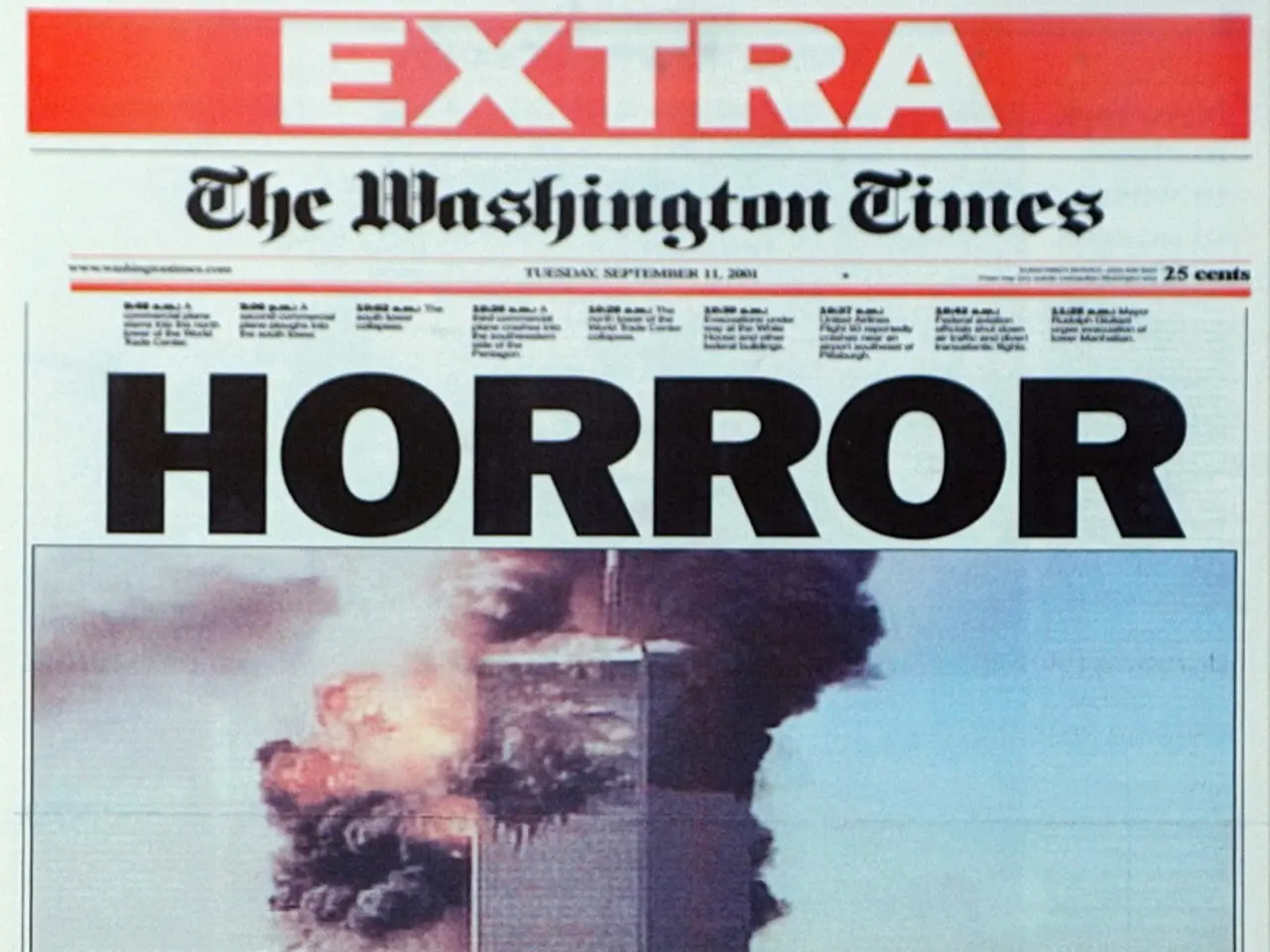Stock Markets in Europe Anticipated to Rise on Positive Outlook for Russia-Ukraine Relations
===============================================================================
In recent days, geopolitical tensions have continued to shape the investment landscape, particularly in Europe and the United States.
Asian markets, excluding Seoul, were mostly higher, but uncertainties over potential tariff measures on semiconductors weighed on Seoul stocks, causing them to underperform. The ongoing trade tensions are a reminder of the impact that geopolitical issues can have on financial markets.
In the realm of monetary policy, Fed funds futures indicate an 85% likelihood of a central bank rate cut at the Federal Reserve's next policy meeting in September. The anticipation of a rate cut is a reflection of the global economy's ongoing sluggishness and the Fed's efforts to stimulate growth.
Federal Reserve Chair Jerome Powell's speech will be closely watched for guidance on a September interest-rate cut. His words could provide valuable insights into the Fed's thinking and the direction of future monetary policy.
European stocks showed a mixed performance on Friday, with the pan-European STOXX 600 ending flat but with a negative bias. The region's markets remain sensitive to geopolitical developments, particularly the ongoing conflict in Ukraine.
The absence of a temporary ceasefire agreement between Ukraine and Russia persists, with negotiations stalled on key issues. While renewed peace negotiations began in 2025, substantial disagreements remain. Russia insists on recognition of occupied territories and other conditions, while Ukraine demands full troop withdrawal and accountability for war crimes. Recent reports indicate that although draft outlines for a truce may be discussed in high-level meetings, agreement depends heavily on President Putin’s consent to a ceasefire, which Russia has so far rejected.
The ongoing conflict in Ukraine maintains higher geopolitical risk and uncertainty, factors that tend to suppress market confidence and volatility. A credible ceasefire or truce—even temporary—could reduce uncertainty, potentially boosting investor sentiment and positively influencing stock markets in Europe and the U.S. However, given the current deadlock and Russia’s rejection of ceasefire calls, markets are likely still pricing in conflict-related risks, including supply chain disruptions and energy price volatility.
In the United States, the Dow Jones inched up marginally, despite retail sales demonstrating resilience in July. Gold prices increased due to uncertainty about the Federal Reserve's dovish expectations. Trump is scheduled to meet European leaders and Ukrainian President Volodymyr Zelensky at the White House.
U.S. stocks ended mostly lower on Friday, with the S&P 500 experiencing a 0.3% decrease but still logging a weekly gain. The tech-heavy Nasdaq Composite experienced a 0.4% decline, primarily due to a drop in chip stocks and weak consumer sentiment data. Big-box retailers, including Home Depot, Lowe's, Walmart, and Target, will reveal their earnings over the course of the week.
Oil prices remained steady following the end of the Alaska summit, easing geopolitical concerns about supply disruption. Washington and its European allies may offer Ukraine a NATO-style security guarantee as part of a potential peace deal.
As we move forward, it will be interesting to see how these geopolitical developments unfold and their impact on financial markets.
Read also:
- President von der Leyen's address at the Fourth Renewable Hydrogen Summit, delivered remotely
- Unveiling Innovation in Propulsion: A Deep Dive into the Advantages and Obstacles of Magnetic Engines
- Intensified farm machinery emissions posing challenges to China's net-zero targets
- EU Fuel Ban Alerts Mercedes Boss of Potential Crisis








